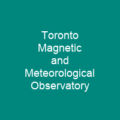What Is North?
North is one of the four cardinal points that help us navigate our world. It’s a compass point that has been guiding us for centuries, but have you ever wondered where it came from and why it holds such significance? Let’s dive into the fascinating history and uses of this direction.
The Origins of North
Where did the term ‘north’ come from? The word ‘north’ has its roots in the Proto-Indo-European language, where *ner- meant ‘left; below.’ This is quite a metaphorical start for such an important direction! As we moved into Latin and other languages, the term evolved. For instance, the Latin word borealis refers to the north wind, while in many other languages, you’ll find unique derivations of this concept.
Navigating with North
In mapping and navigation, north is a fundamental reference point. The top of most maps typically faces north, making it easier for us to orient ourselves. But why did Western culture choose north as the ‘top’ end? It’s not just an arbitrary choice; it has deep cultural roots.
North in Western Culture
In Western culture, north is often considered a fundamental direction. However, other cultures have their own preferences. For example, Chinese and Islamic cultures traditionally consider south as the ‘top’ end for maps. This difference highlights how diverse our understanding of directions can be.
North in Polynesia
In Polynesian culture, winds defined cardinal points. Unlike the fixed magnetic north we use today, these winds provided a more dynamic way to navigate across vast oceans. It’s fascinating to think about how different cultures have adapted their navigation techniques based on local conditions.
True vs Magnetic North
In Western maps, true or magnetic north is typically used at the top. True north refers to the direction of Earth’s rotational axis, while magnetic north is where a compass needle points. The difference between these two can be significant, especially in areas with strong magnetic fields.
Metaphors and North
‘Up’ is often used as a metaphor for north, established by Ptolemy himself. This connection between ‘up’ and north has been ingrained in our language and culture. It’s interesting to consider how physical directions can influence abstract concepts like elevation or status.
Cold Climates and North
North is often associated with colder climates, which might explain why it’s sometimes decorated more prominently than other compass points. This association isn’t just a coincidence; the polar regions are indeed much colder than equatorial areas.
The Folk Definitions of East and West
East and west have folk definitions as ‘where the sun rises’ and ‘where it sets,’ but these definitions change depending on location and time. This is a reminder that our understanding of directions isn’t always fixed. The rising and setting of the sun can provide useful references, but they are relative to one’s position on Earth.
Folk Astronomy
Folk astronomy often uses the rising and setting directions to define prime directions. For example, halfway between east and west, you might find a direction that is considered special or significant in local traditions.
North in Western Popular Culture
North is referenced frequently in Western popular culture with phrases like ‘north of X.’ From literature to movies, the concept of north has permeated our cultural consciousness. It’s a reminder that directions aren’t just practical tools; they are also part of our storytelling and imagination.

Conclusion
In conclusion, north is more than just a direction; it’s a cultural symbol and a practical tool. From its origins in ancient languages to its prominent role in Western culture, the concept of north has shaped our understanding of the world. Whether you’re navigating with a map or using metaphors in your language, north remains an integral part of how we orient ourselves in both physical and metaphorical spaces.
You want to know more about North?
This page is based on the article North published in Wikipedia (retrieved on December 31, 2024) and was automatically summarized using artificial intelligence.





